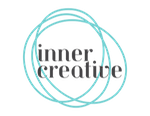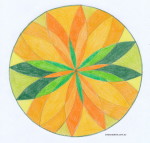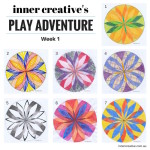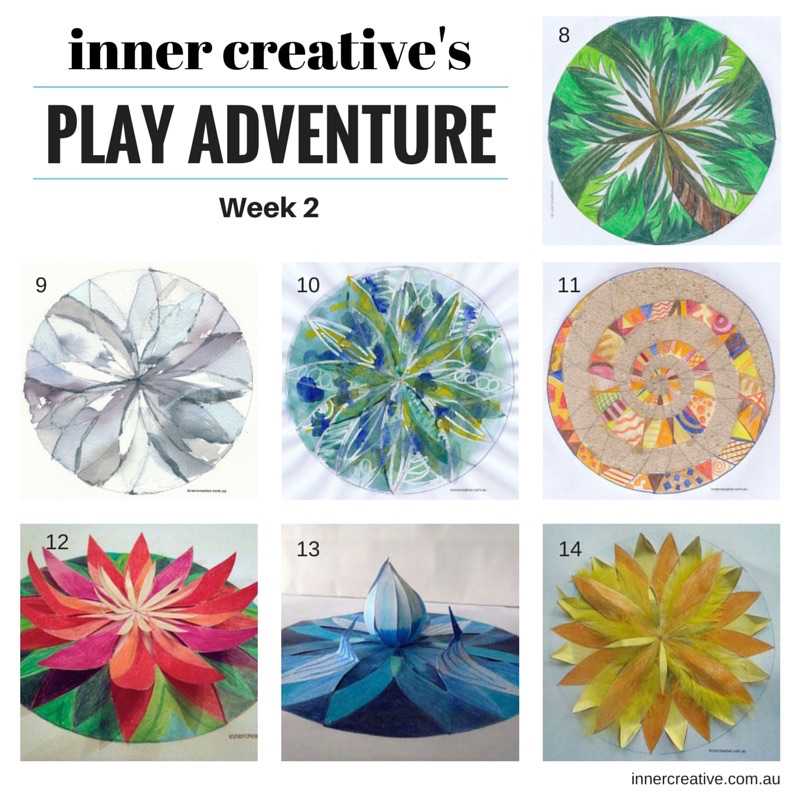
Wow! It’s hard to believe how fast I hit the week two mark of my mandala Play Adventure (you can see how it all started here). This week I really tested the limits of what I could do through this exercise in terms of ‘colouring in’ a mandala every day.
This week’s mandalas were very different from what I created in week 1. I purposely didn’t try to colour within the lines. But I also tried to remain respectful of the original mandala form within the mandala colouring page. Needless to say, it created an interesting tension and dynamic between following the rules and wanting to break out of them.
So my key insight from this week related to the value of self-imposed limits in sparking creativity.
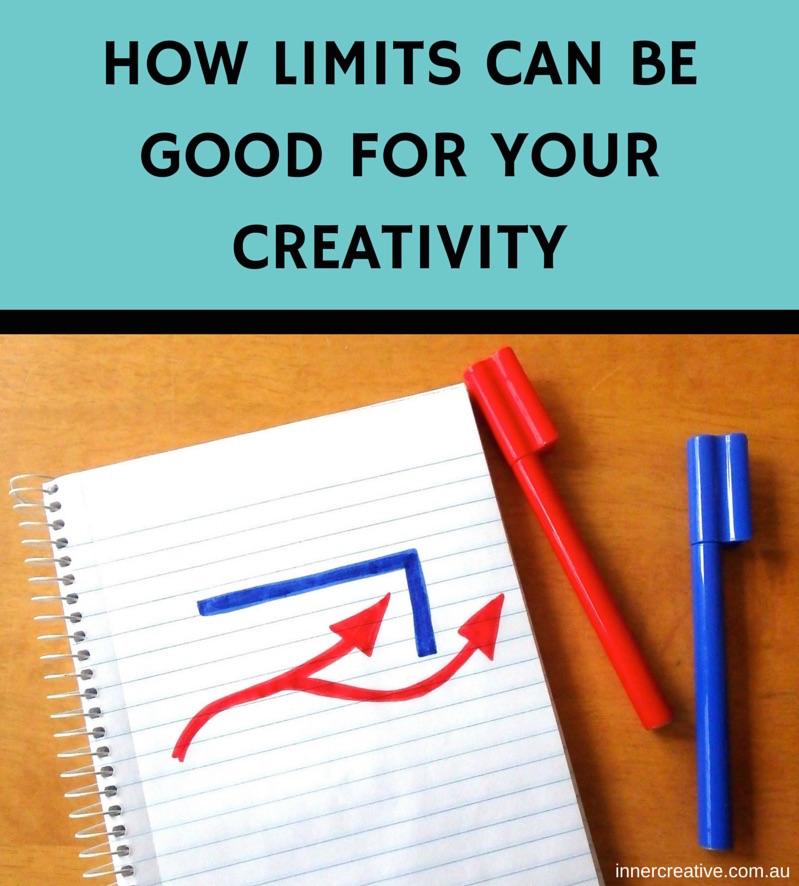
At face value, one might think that the opposite was true – that rules and limits would be counterproductive to creativity. But I think that it relates to the nature of the task and its timing.
It’s nice to start with a blue sky of endless possibilities when you’re in an exploration or scoping phase. For instance, when you’re conducting a visioning exercise or starting a project or product from scratch. At these times, you need to use what’s called ‘divergent thinking’, where you generate a wide range of possible solutions or ideas. There’s nothing more dampening to a business planning session when you’re told to be innovative and dream big, as long as it’s within ‘business as usual’.
But sometimes when we’re faced with that open-endedness, like a blank piece of paper, it can be a little intimidating. We end up getting stage fright and can’t think of anything! So that’s when it’s useful to impose your own limit or rule as a starting point. You could also impose a constraint to re-energise a flagging brainstorming session to spark some different ideas from the ones you already have. For instance, what things could we try if we had no budget? Or what would we do if we had to deliver this in a zoo? Or in only two days? It seems easier to bounce off something rather than start with nothing.
In many cases, these limits might be reality, like having a fixed budget or a particular site to build your home on. Don’t let it get you down. During the exploring phase there’s room to play with these constraints and flip the limit the another way to see what other ideas might emerge. So using the house example – you’re most likely limited to the physical constraints of the block that you’re building your house on (e.g. block size, shape, topography and location). However, when you’re creating a vision for your new house design remove all limits to work out your potential ideas. Perhaps imagine what you would do if you could buy and use the adjacent block? Or if you could relocate your house to the seaside or a rainforest?
Opening things up helps you generate some very different ideas that you can then sift through once you’ve returned to reality to work out how you could apply the exciting and/or interesting ideas within your real limits (that’s when you use ‘convergent thinking’ to narrow your ideas towards the best solution). For instance, you may have dreamt of an orchard of fruit trees in your unlimited backyard, so make sure to incorporate some fruit trees, even in pots, in your real backyard. Dreamt of lazing on the balcony amongst the tree canopy in your rainforest dream house? Perhaps incorporate a deck or balcony with a hammock and nearby plants to create the same feel?
Imposing limits and rules are also a good way of working out what you value, what’s essential and what you’re willing to trade off.
In my case, I limited my mandala project to ‘colouring in’ the same mandala outline each day. In a way it made things both easy and hard. It relieved the pressure of having to invent something from scratch each day. But I started to wonder if this limit would be my undoing, and whether I could continue to create something different and interesting for 30 days.
At first I thought this project would involve using my coloured pencils or pens to create different colour combinations and patterns. But already by day 3 I was starting to itch to do something more. I was inspired to add some sparkle by sprinkling some glitter on top. This made me consider the rule of only colouring in the mandala outline. I decided that by modifying the rule of ‘colouring in’ to ‘filling in’ the mandala that I would open up what I could do in this project. I was comfortable stretching this limit because it didn’t compromise the intent of my project, which was about playing and not just about colouring with pencils.

By the end of week 1, I was starting to push against the limit of colouring within the lines and patterns of the template. On Day 8 in week 2 I was inspired to capture the feeling of a rainforest with long grass. But how to do that while sticking to the mandala outline? I thought about how young children are taught by adults to colour in between the lines. But who is to say that that is the only and right way of colouring in? And what if we’re called to express something beyond those lines?
So, I decided that I was happy to break the rule about only colouring in within the lines. However, by removing this limit it opened up the possibility of creating a mandala where I could use the same pencil to colour in the whole circle, or I could go complexity freehand and just draw whatever I felt like over the outline. I could end up with something like the images below. Creating a freehand mandala, where you draw whatever you like within a circle, is a perfectly legitimate way of creating a mandala.
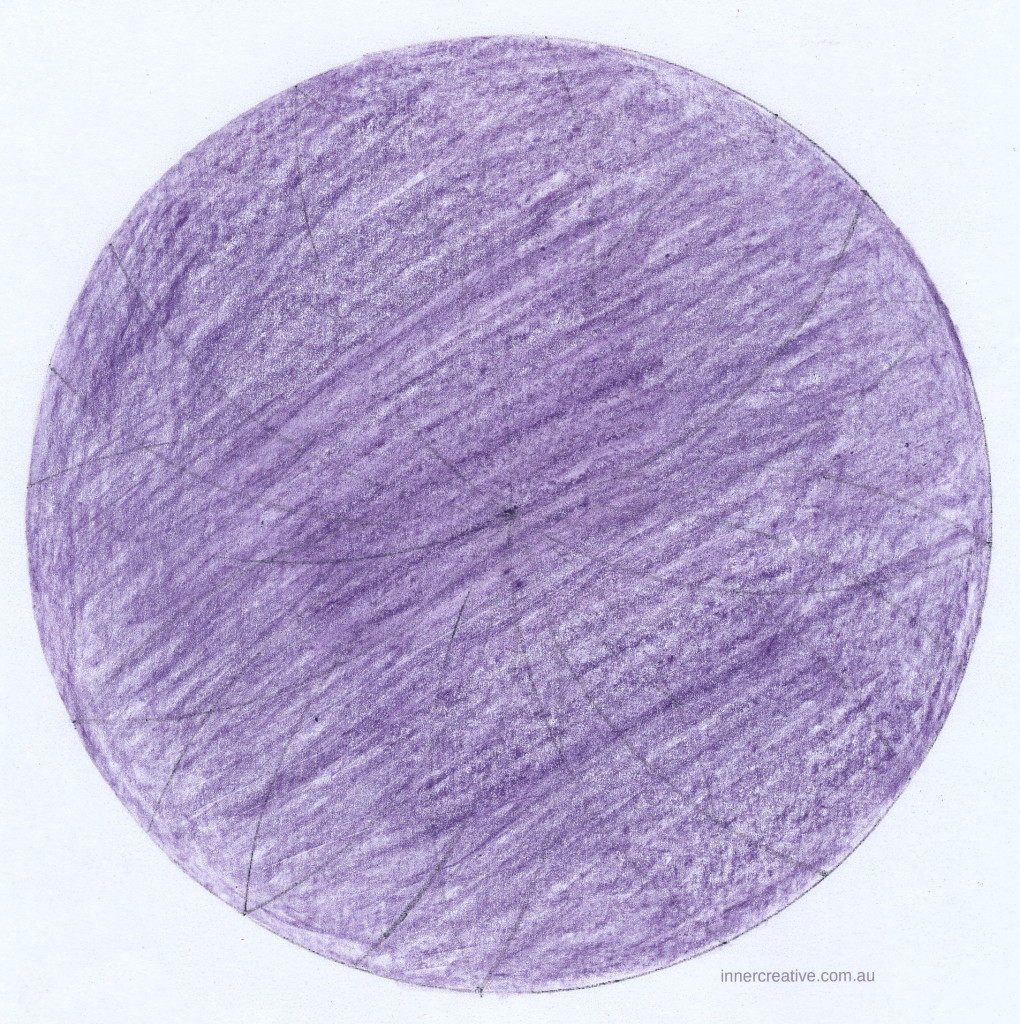
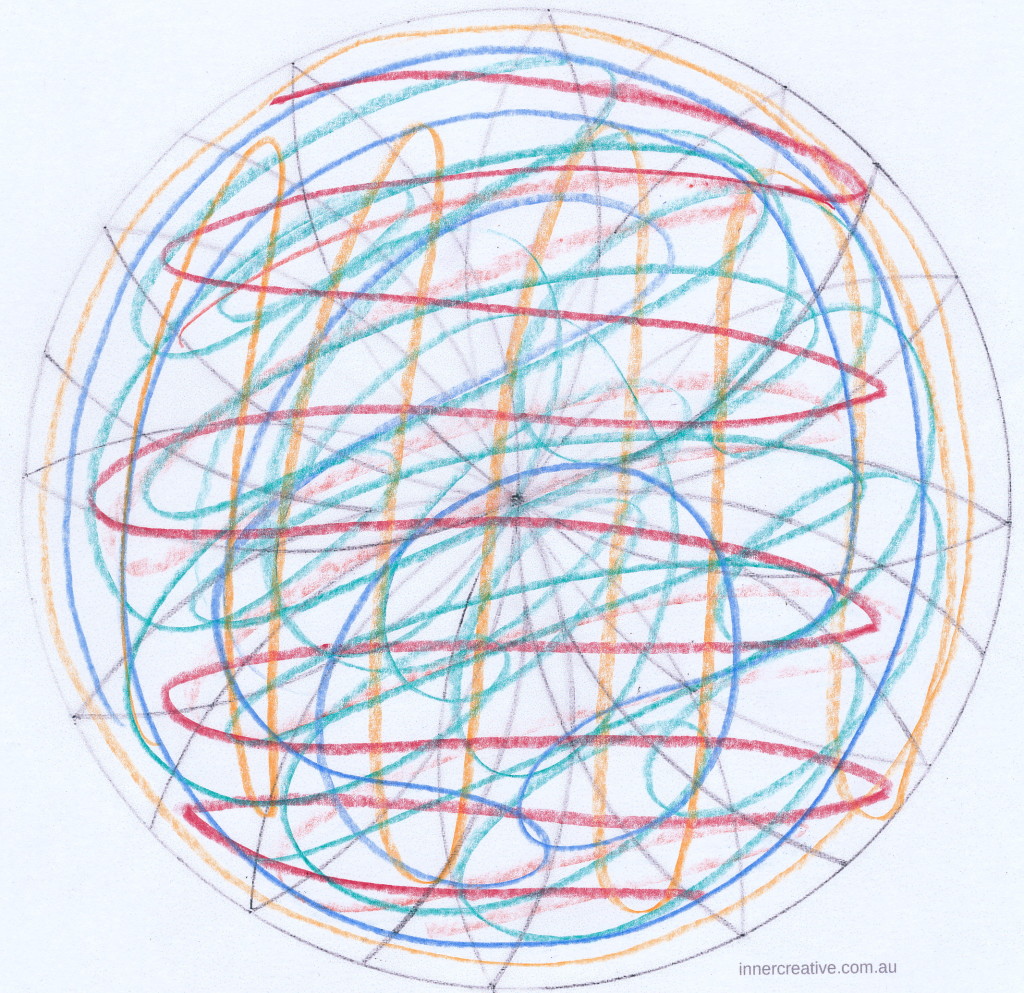
But that wasn’t the intent of this exercise. My intent was to colour in the same mandala form but in different ways.
Consequently, I decided that it was important to be respectful of the original mandala outline and adopted that as my rule for this exercise. This meant that I didn’t have to colour within every line. I just had to keep some of them. In creating my day 8 rainforest (see image below) I also decided to loosely adopt another common attribute of mandalas, which relates to symmetry and patterning.
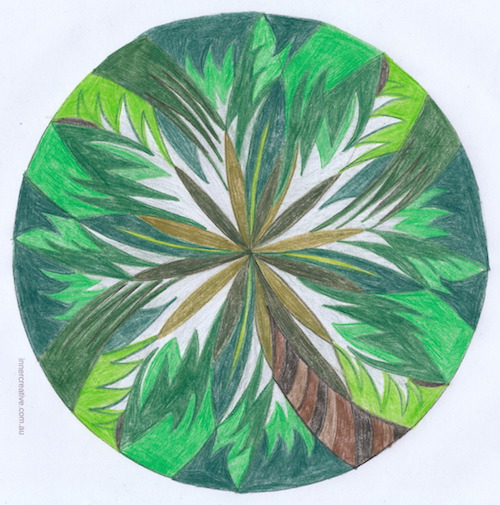
In the end, the process of setting and questioning rules really helped me work out what was important about my mandala play adventure. I decided which rules were fixed (like using the same mandala template each day and respecting the underlying mandala’s form), which ones could be changed (e.g. colouring in became filling in), and which ones were flexible and more like guidelines (e.g. using symmetry and pattern).
Rules and limits can make things more challenging for us. But they can help us sharpen our creativity and innovative thinking by forcing us to find another way to respond to the issue.
Who would have thought that I could create such a wide variety of mandalas from a single colouring page? From experience, there is nothing sweeter than knowing you’ve overcome the odds and the satisfaction you feel of solving a tricky puzzle or creating something totally unexpected.
Rules and limits also shine a light on what’s important and valuable about what we’re doing, and what rules need to be broken.
What rules and limits could you use to test your creative muscle?
Can you think of a time when you have been able to break a rule to get a better, more creative result, while still maintaining the integrity of a project?
I’d love to know. Please share your thoughts in the comments below.
